We Created a Thing!
Exploring a journey from the city to the farm - Part 4
Dear reader,
Welcome to the fourth and last instalment of this mini-series, which explores my journey from the city to the farm. In truth, I’ve found this series slower to write than I initially expected. After publishing this post, I’m looking forward to pivoting to more regular one-off articles. In this last post, I want to tell you about Juntos Farm. How it came to be and what we’re creating.
One of the catalysts for getting this post out today is that I’m about to go off-grid for the next 18 days as I travel deep into the Peruvian Amazon for a traditional Shapibo plant dieta. This is my third time in Peru. I’m writing to you from my hotel in Pucallpa, a small jungle town, the day before we begin our journey into the forest. I’m excited to be back here and to dive once again into the world of plant medicine and Shapibo culture.
In the previous three posts of this series, I’ve unpacked a journey that took me from London to New York and Tokyo, shifting the way I think about my relationship to nature and urban living. I’ve explained why I tried to scale one of the tallest mountains in Europe and why I travelled deep in the jungles of South America. All of this ultimately set me on a journey towards deep reconnection. I wanted to find a more profound sense of purpose in what I was doing with my life. This is what led to a two-year degree at Cambridge University exploring regenerative design and circular food systems. My goal was to complete my studies in architecture by understanding how we can restore the health of the planet, rather than degrading it more than we already have.
About 20 students were studying with me, and during the two years, we each spent three months doing fieldwork in different locations. The goal was to find a way to implement our research into a live project. While some students went off to the Middle East and South America, I had chosen Ibiza - much to the amusement of my Cambridge professors. For me, it was a place that I had a deep connection with. I grew up going there as a kid, and I was fascinated by how dependent it had become on imported food, having once been totally self-sufficient. As I mentioned in the last post, up to 96% of the food consumed on the island is shipped in, making it highly vulnerable to disruption. I wanted to understand: What does designing for resilience and greater food sovereignty look like?
So off I went, during those three months, I met as many people as I could who worked in farming and agriculture. One name kept coming up over and over again. Christian Jochnick. Now I call him ‘The Crazy Swede’. Christian had spent five years experimenting with organic farming in Ibiza and setting up a farm-to-table restaurant called Juntos House. He had big visions for an island-wide movement towards regenerative agriculture. When we met, it was clear we shared the same goal. In our first meeting, I showed him my research and my design work, and he grinned, ear to ear. He told me he had recently visited a site that could be perfect for the kind of project we both envisioned. Later that week, he took me to see it in person.
Known locally as La Vaqueria, this place was an old dairy farm that had been abandoned for over 10 years. As we walked around, Christian explained that he thought he might be able to raise the financing to buy the site, but he needed help with shaping the vision of what it would become. So I agreed to make it the focus of my thesis project. I still had one year left out of the two-year degree. I spent the next 8 months going deep, exploring the potential of this place with all the freedom that comes with being a student. Budgets and planning permissions were less of a concern at this point... It was more a question of ‘What is possible here?’.
In 2022, I graduated with the final project. The result was two parts: A 14,000-word written thesis called ‘Design for Regenerative Systems’ and a visual design project that explored what this old diary farm could become. Through the written research, I explored the theory behind regenerative design. Outlining an approach to five circular systems: food, shelter, energy, water and waste. While in the design work, I imagined visually what it would look like to transform the 12 agricultural buildings on site into a new community hub where you can see food being grown, transformed and enjoyed all in one place. I imagined two large market squares, surrounded by buildings with solar panelled roofs, renovated using a mixture of natural materials such as hemp, straw, cork and clay.
Literally, as I graduated, Christian completed the purchase of the cow farm. From there, things began to move pretty quickly. I packed up my bags and started the journey out to Ibiza to pursue the project full time. The opportunity was too good to miss. At times, it also felt too surreal to be true. To be honest, it has taken me until now to feel confident enough to share it publicly. Usually when things are too good to be true... that’s because they are! However, we are now three years in. While many challenges are still ahead of us, we have put in strong enough foundations that I feel ready to share it publicly.
One of the first things we did when we arrived on site was start the design of the farm itself. In my work, since my background is in architecture, I had been focused on how we imagined transforming the built area of the site. But we have 7 hectares of farmland next to that, so we hired United Designers to help. Below you can see the plan they produced. They also created a beautifully written research document (if you want to see the design in more detail). The proposal combines a series of regenerative systems such as alley cropping, agroforestry, rotational grazing, orchards, herbal medicine gardens and a rewilded zone that runs through the middle along an old river bed. It’s ambitious but not impossible. Both of these master plans for the buildings and the farm are guiding the work we’re doing on site today.
As with all complex projects, you need to break it down into manageable parts. So we’ve split the entire project into roughly four phases over a timeline of 8-10 years. When I arrived in Ibiza, we began Phase 1. This included renovating one of the twelve agricultural buildings on site and cultivating about a quarter of the farmland. There is much more detail to the full Phase 1 plan, but this is the simple summary. People always ask me about financing, and I want to be transparent about this. We raised a Series A round of funding from a group of investors to cover the cost of this development work. These kinds of projects need proper financing. Building infrastructure is never cheap. This phase is a sort of proof of concept. If we can show the model works.. We’ll continue fundraising from there for the next phases to follow.
Since I arrived on site in January 2023, I’ve been focused on bringing Phase 1 to life. Since my background is in architecture (seven years of studying by this point!), I led the design of the first building. It’s called the House of Harvest. It used to be the old slaughterhouse for the cows back when it was a dairy farm. Now there is an entirely new ecosystem inside to support the farm and bring the community together. There are spaces for food distribution, transformation kitchens, a farm shop and a tasting room. We loaded 70 kw of solar onto the roof and used natural materials such as lime, cork, clay and wood fibre to insulate the walls and roof. This project tested me to my limit and potentially taught me more than 7 years of architecture school!
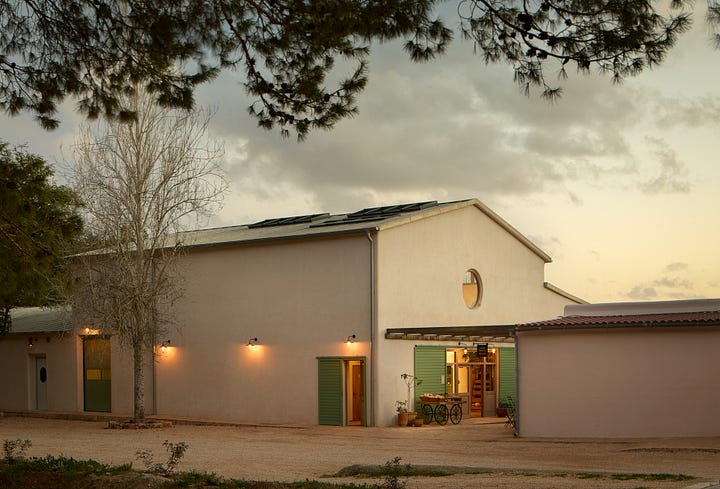
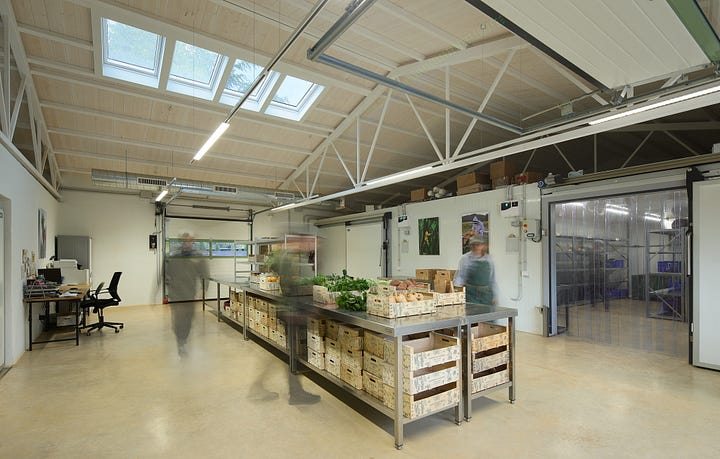
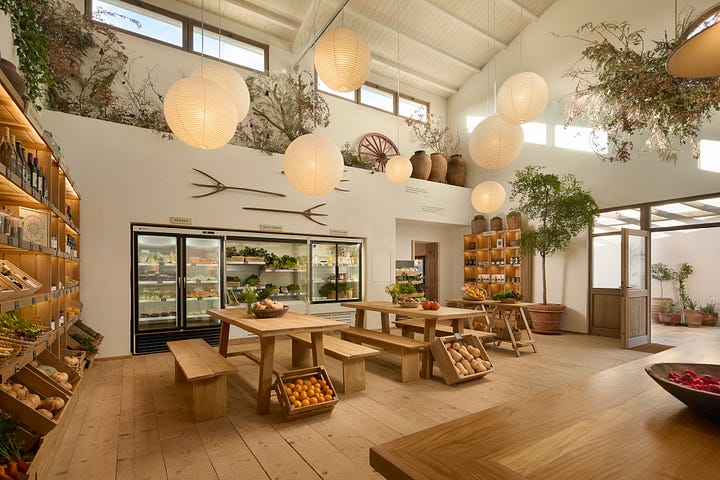

Meanwhile, on the farm, our team has started planting hundreds of thousands of seeds in beautiful curving rows that follow the land's keylines. We’re poly-cropping a diverse mixture of vegetables, fruits, flowers, nuts, and grains. We’re already in our second season of growing. We’re harvesting more food than we thought and feeding the soil as we go with our own homemade compost. We’ve even introduced chickens, goats, and honey bees on site. Animals are key in regenerative systems. In just two years we’re seeing a noticeable uptick in biodiversity and soil health. It’s very rewarding to see regeneration in action on a daily basis.
There is much more to share and more to say, but that’s the big picture for now. It has been a wild journey to get to this point. I hope some of these words over the last four posts inspire you in your own journey and projects. My goal with this publication (The Seeds Will Grow) is to share more stories about what we’re doing at the farm and how we’re developing the project over the months to come. I want to keep diving deeper into topics related to food, design, environment, and community and share what I learn along the way.
Thanks for reading Part 4 of this four-part mini-series exploring a journey from the city to the farm. Stay tuned for future articles! Please leave comments below and share with anyone who might find it interesting.
Finn


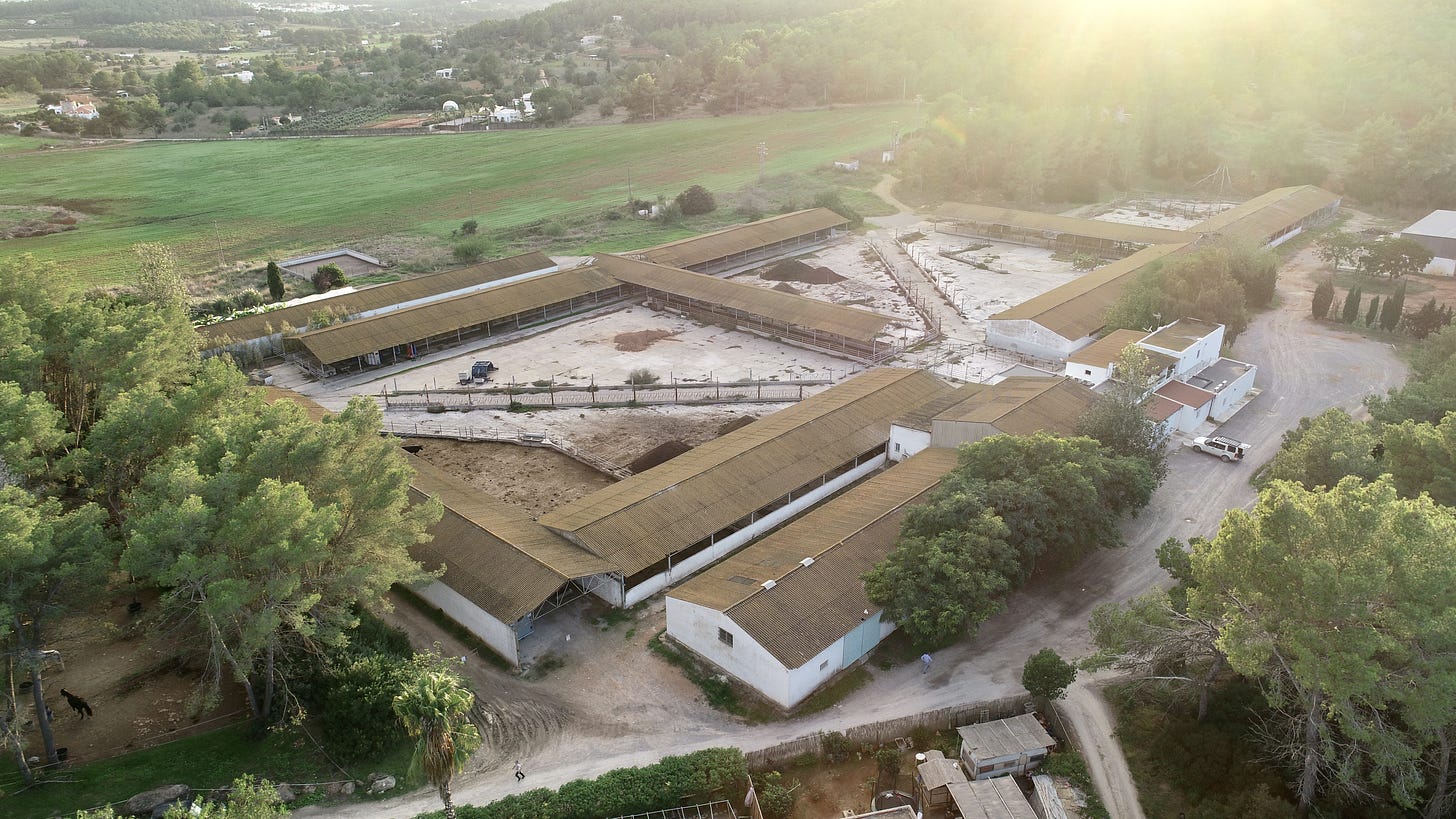

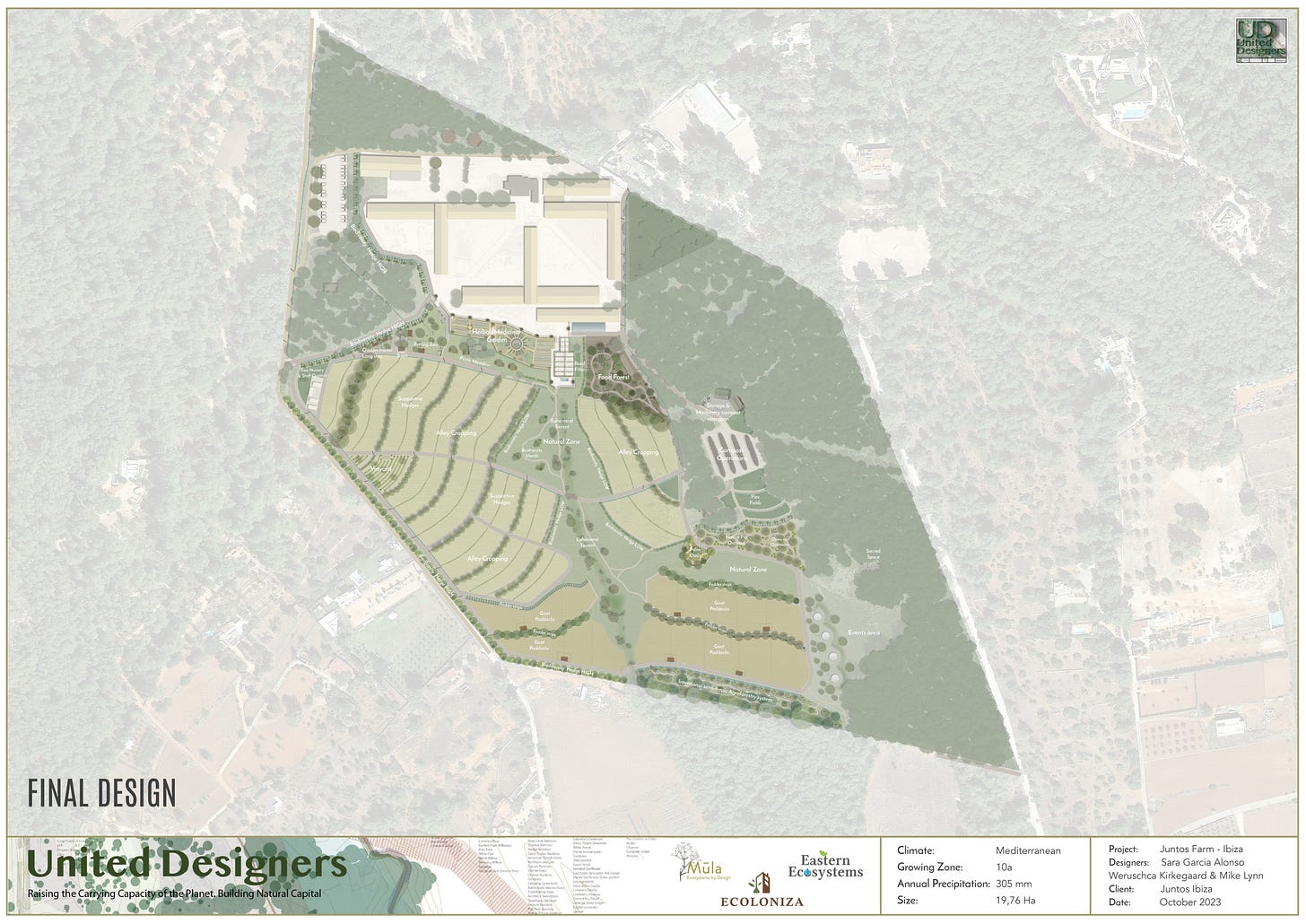
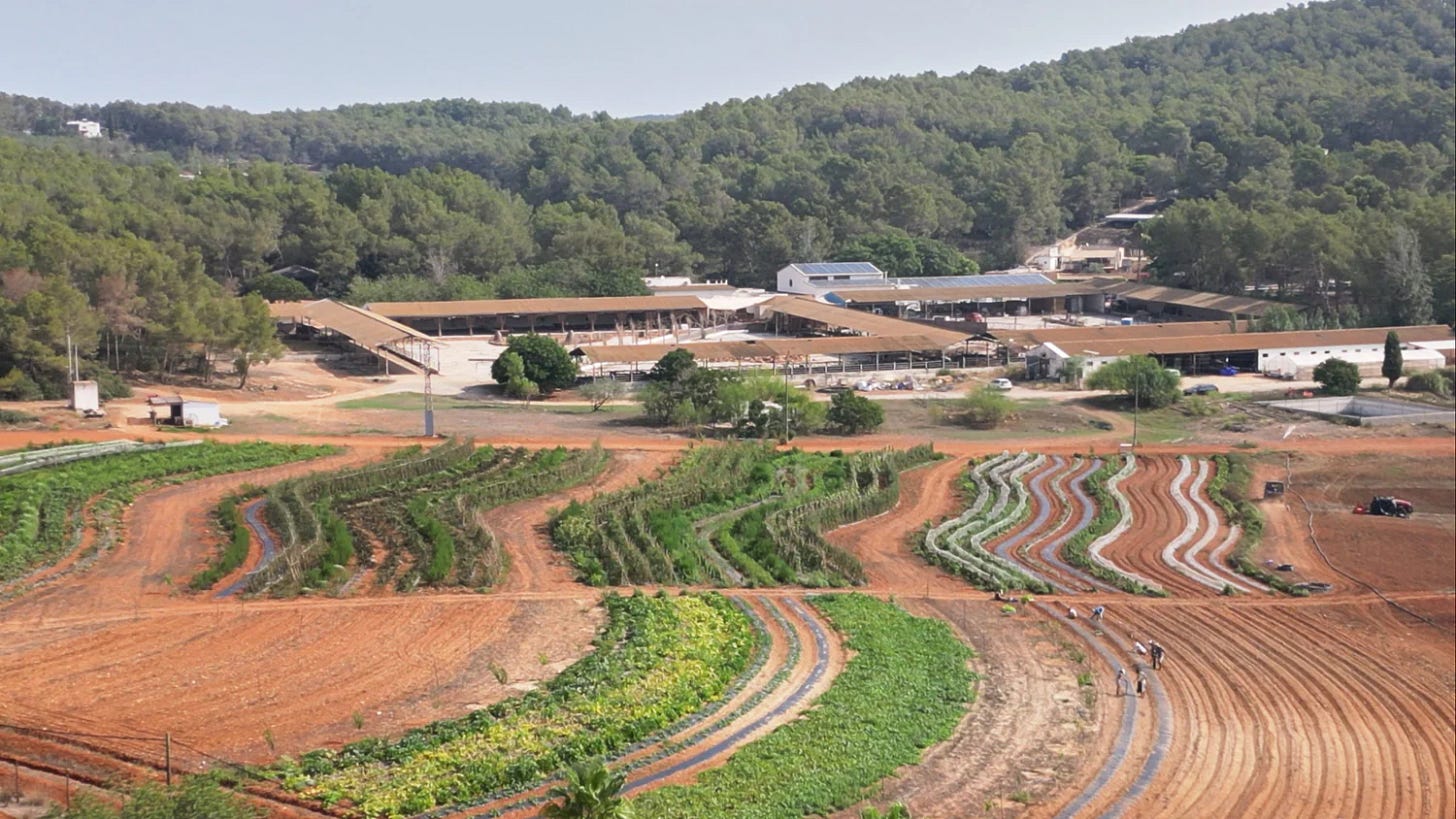
the House of Harvest is so beautiful and I love how it brings the farm and your path full circle! Out of curiosity, what do you do with the surplus food that doesn’t get sold?